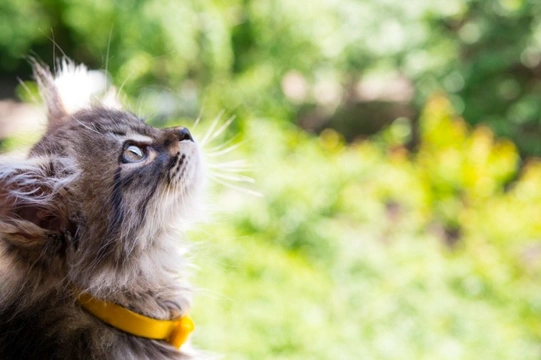
Common misconceptions about cats and the need for a collar
Many first-time cat owners think cats need collars, that it is the law, that there is a need to ensure others know the cat is owned, or they just get one without really considering it, thinking that it is just what you do. However, there are far more bad reasons to put a collar on a cat than good ones in most cases, all relating to safety.
Collars on roaming cats come with inherent risks, and can pose a threat if they catch or hang on something. Properly made cat collars are designed to snap or release in such situations, but these are not the default, and even in large and well-reputed pet stores and retailers, not all collars on offer will necessarily tick the right boxes, even in principle.
Also, whether a collar that is intended to release under pressure really does, is not an exact science. This is not to say that there may not be valid reasons for a specific cat to need, in their owner’s opinion, a collar; such as if the cat gets fed everywhere and you need to let others know they have a home, or if the cat has a health condition and it is important that anyone who found the cat knew this.
Generally though, many people (particularly first-time cat owners) simply get a collar for their cat without really considering if they need it, just as part of buying all of the things they need for their cat in the first place.
It is important to remember that collars come with risks, and that putting a collar on a cat, while sometimes the right choice, is something you need to do with open eyes and after full consideration. This article will outline some of the misconceptions many people have when they put a collar on their cats, and points you should consider if you’re trying to decide if a collar for your own cat is the right choice. Read on to learn more.
There is no law or requirement for a cat to wear a collar
Dogs in the UK are required to display ID showing their owners details; which essentially means they need to wear a collar. This leads many cat owners to assume that the same is the case for cats, but it is in fact not the case.
There is no law or requirement for cats to display ID and so, need a collar.
Collars can indicate that a cat is owned, but in the UK this is not an acute issue
The initial purpose of collars for cats was to let others know that the cat was owned. This is achieved by means of ID displayed on the collar, but simply the presence of the collar itself too. For people under a certain age, this might seem a bit weird; all cats in the UK more or less are owned, and you don’t tend to find many feral cats even in rural areas; in suburban areas, cats that appear to be wild or lost tend to quickly get taken in and rehomed, or their original owners traced.
Back perhaps 40 years ago this was not the case; wild and stray cats were very common, and people who had pet cats often used to distinguish them with a collar. Outside of the UK, this is still the case in many countries; but in the UK, the vast majority of cats are owned and assumed to be so, and so this is not as relevant.
Cats should still be microchipped, with or without a collar
Cats should be microchipped whether they wear a collar or not, and cats regularly tend to lose collars but of course, not microchips. A collar should not be relied upon to let people know how to find you if your cat is lost; but most lost cats that get spotted or hang around a certain area will be checked for a microchip sooner or later. They’re far more useful for getting lost cats home.
Many first-time cat owners assume a collar is just “the done thing”
First-time cat owners or anyone getting a new cat tends to draw up a shopping list of things they need to get. This includes bowls, food, a bed, scratching post, litter tray and so on; and many people add a collar to this list without thinking much of it.
A collar is optional, not essential; and many people who don’t have the frame of reference of prior cat ownership (or who may have lived with cats as a child rather than being the person caring for them) simply think that a collar is “the done thing” when it is wholly optional.
Cat collars should not be decorative or seen as a fashion accessory
Dog collars can be quite expensive and fancy, and even some human designer labels produce designer dog collars too! This is fine for dogs, as fashion comes second to function, and also dog collars don’t come with the same risks as cat collars.
Collars for cats though should never be seen as something to get as a fashion accessory, or wholly or largely because the collar is pretty or cute.
Think of collars in terms of only using them if there is a reason; not as the default
The best way to think about cat collars is in terms of using them only if there is a good and valid reason, with no collar being the default, not the other way around.
There might quite possibly be a valid reason some cats need a collar, like if it is important other people do not feed them (and the collar says this), or if you do live in an area or even country where stray cats are the norm and so there is a very low chance of someone identifying your cat as lost if they were, unless they had a collar.



